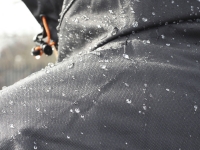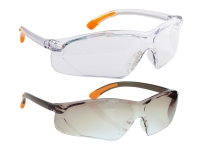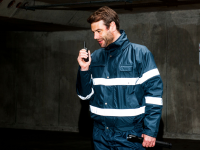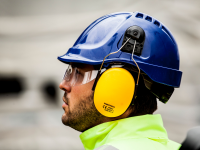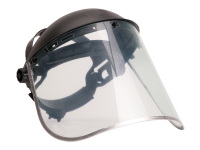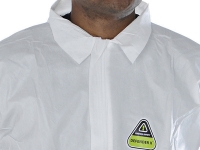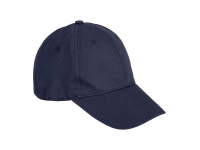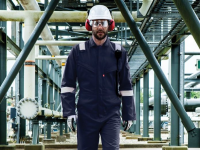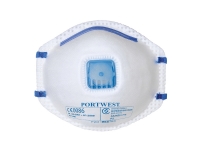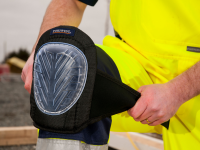Personal Protective Wear
Protective Clothing, Gloves, Footwear & All Other Accessories
Additional Information
Do you work in an environment that exposes your employees to various hazards, from slips and falls to chemical exposure?
If so, investing in protective gear isn't an option. It's a requirement to stay compliant with industry standards and ensure the well-being of your most valuable resource: your workforce.
Today, we're sharing a few of the many reasons why it's smart to stock up on personal protective equipment for your organization.
Ready to learn more? Let's get into it!
What is Personal Protective Wear?
As its name implies, personal protective wear is any gear that is designed to protect your team members against physical harm or any other hazards that could be present in your work environment.
From manufacturing and warehousing to mining and logging, many different industries require at least some form of personal protective wear. While these might not be everyday hazards, wearing the gear is a preventative step toward improving on-site safety conditions.
Before you research the best equipment for your workforce, make sure to read over the Occupational Health and Safety Administration (OSHA)'s guidelines on personal protective wear requirements. You're required by law to meet these standards, or you could face serious penalties and legal fallout in the event of an audit or accident.
Next, let's take a look at why personal protective wear should be an essential business purchase, starting today.
Why Invest in Personal Protective Wear?
Although almost every industry might incur some form of risk, workers should never feel in danger when on the job. If you don't currently have a personal protective wear budget in place, here are a few reasons why it's smart to invest.
1. Provide Head Protection
If there is any kind of construction present at your worksite, hard hats are a must. This is also the case in a warehouse, manufacturing facility, or any other location where objects could become airborne and strike a worker.
As long as the hard hats are properly fitted, they can provide adequate head protection in even the most hazardous conditions. In addition to basic hard hats, you can also purchase ones with integrated accessories that offer additional protection, including earmuffs and face shields.
2. Provide Respiratory Protection
If there are any toxic substances present at your worksite, respiratory protective wear is a must-have. This is because even if you can't see the harmful gases and poisonous fumes, they're still all around you. Inhaling them can lead to serious and long-term health issues, so it's vital to protect your personnel.
Thankfully you can invest in gear such as respirators to keep all harmful chemicals and other substances on the outside of your body. In addition to chemical gases, this could also mean protecting from:
- Dust
- Paint fumes
- Pesticides
- Acids
- Glues
- Heavy metals
- Disinfectants
- Petroleum products
Note that respirators and related personal protective wear are to be used in conjunction with other on-site preventative measures to limit exposure to such substances. You should also ensure that your facility has adequate ventilation to keep the indoor air quality as healthy as possible.
3. Provide Face and Eye Protection
Hard hats aren't the only protective wear designed to protect your workers from the neck up. Anyone who might come into contact with flying debris or harmful substances that could cause damage to their face and eyes should also be protected. Some of the most common gear in this category includes:
- Safety goggles
- Spectacles
- Full-face shields
- Chemical splash goggles
- Dust goggles
- Fluid-resistant shields
- Welding shields
- Laser eyewear
If you work with any kind of metal or welding, or if you use air tools regularly, this kind of equipment isn't optional. The dangers you and your team could be exposed to include:
- Chemicals
- Radiation
- Biological materials
- Physical hazards
4. Ear and Hearing Protection
Is your "office" louder than most? Whether you work outdoors on a construction site or indoors at a manufacturing plant, it isn't uncommon to be exposed to noises that far exceed recommended safety limits. Although it's impossible to "see" industrial noise, that doesn't mean it isn't a very real workplace hazard.
Thankfully, there are specific kinds of personal protective wear designed to protect and preserve your employees' ears and hearing functions. If the noises in question are mostly high-frequency, then earmuffs offer adequate protection. If they're low-frequency, then industrial earplugs are preferable.
5. Skin Protection
Did you know that skin diseases are the second-most-common form of occupational disease? These can include a range of afflictions, including:
- Irritant contact dermatitis
- Allergic contact dermatitis
- Skin infections
- Skin injuries
- Skin cancers
- Burns
Not only are these diseases painful and often difficult to eradicate, but they can also be very expensive to treat.
While you're focused on protecting the skin on your workers' faces with protective shields and other face-specific protective wear, you should also invest in protective clothing if their extremities will be exposed to hazardous conditions or materials. Examples of these clothing items include:
- Bodysuits
- Safety coats
- Flame-resistant coveralls
- Flame-resistant jackets and sweatshirts
- Flame-resistant pants
In addition to protecting your employees from high-heat environments, you can also purchase gear to keep them as highly visible as possible. This way, they're always clearly identifiable and conspicuous, even in low-light conditions.
Moreover, if your team members are regularly exposed to adverse weather conditions, you can also outfit them in weatherproof personal protective wear to make sure they stay as dry and warm as possible.
6. Hand Protection
In addition, don't forget to take note of your employees' hands. If your workers touch or transport dangerous substances, they should be outfitted with industrial-grade gloves designed for their specific industry and task. Some of the most common forms include:
- Rubber gloves
- Chainsaw gloves
- Cut-resistant gloves
- Water-resistant cryogenic gloves
- Heat-resistant gloves
Invest in the Protective Gear You Need to Safeguard Your Business
As a business leader, you know that job site safety isn't just required to protect your workforce. It also helps shape your industry reputation as a considerate and reliable employer.
Take the time to understand your employees' needs and consider all of the hazards that they could face during a typical workday. Then, invest in the protective gear necessary to keep them safe around the clock.
When you're ready, check out the wide range of personal protective wear that we offer in our online shop. We'll help you outfit your entire workforce in the gear they need to maintain performance without sacrificing protection. Feel free to contact us today with any questions.


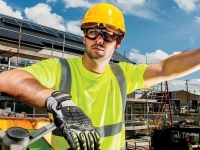
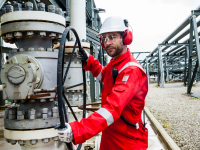
.jpg)
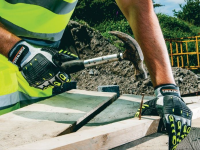
.jpg)

